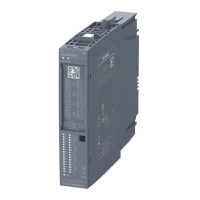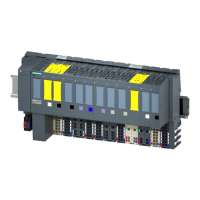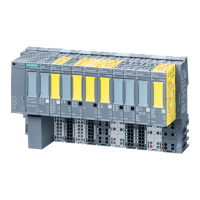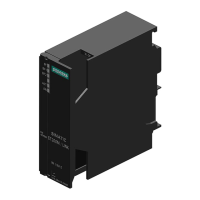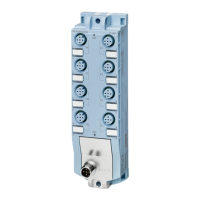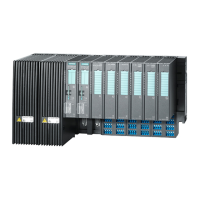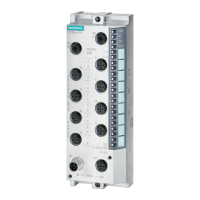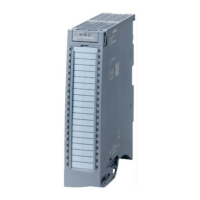Configuration example
For use in an automation system, you combine the following components of the
SIMATIC ET 200SP HA distributed I/O system into an IO device. An example configuration of
an IO device is shown in the following figure:
Figure 3-1 Example configuration for an IO device
Table 3-1 Legend for sample configuration (numbering in the installation sequence)
① Rail: The rail is the type-specific installation platform of the IO device.
② Carrier module for interface module: The carrier modules are used for the electrical and mechanical connection of the
individual modules.
③ Plug-in connector 4-pin: Connection for supply voltage (X80)
④ Interface module: An interface module is the interface of the distributed I/O system to the central unit of the automation
system.
⑤ BusAdapter: The BusAdapter connects the IO device to the IO controller (CPU) via PROFINET IO.
⑥ Carrier modules for I/O: The slots for the I/O modules are created by the connection of these carrier modules to the
terminal blocks.
⑦
⑧
Terminal blocks: The terminal blocks provide the process terminals for connecting sensors, actuators and other devices.
⑦ Light-colored terminal block TB..D: Separation of potential groups and terminals for connection to the supply voltage
⑧ Dark-colored terminal blocks TB..B: Extending the potential group
⑨ I/O modules: The I/O modules are converters between the process signals and the digital data of the interface modules.
⑩ Power bus cover: Server module and power bus cover complete the configuration of the IO device.
⑪ Server module: Server module and power bus cover complete the configuration of the IO device.
⑫ Reference identification label: The reference identification labels are used to identify the slots.
System overview
3.1 What is the SIMATIC ET 200SP HA distributed I/O system?
ET 200SP HA Distributed I/O system
16 System Manual, 08/2019, A5E39261167-AD
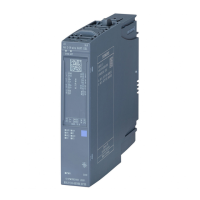
